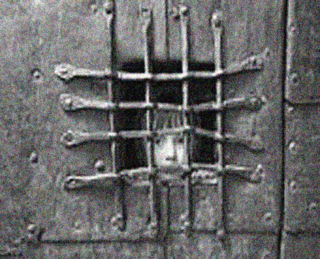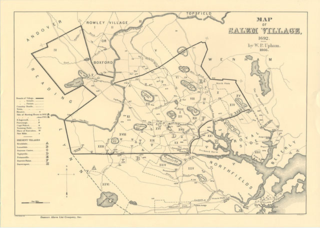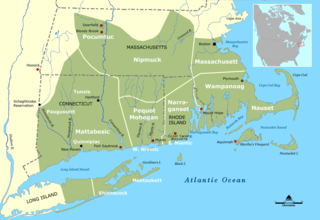In celebration of the long anticipated release of Suffer a Witch, here are a few things I learned through researching much of the scholarly work.
Five things that surprised me about the Salem Witch Trials
1. There was no witchcraft going on. Take a moment to digest that. Tibuta was a slave owned by the Reverend Parrish. She never took the children into the woods to do spells. This was a story concocted by Charles Upton for Salem Witchcraft (1869), the first modern book about the trials. It's a great story because it supports what the perpetrators said about the trials.
To believe there was witchcraft going on in Salem would be like believing that the Columbine shootings happened because the boys were outcasts. Perpetrators always justify their actions.
In this case, the perpetrators justified their actions by claiming that witchcraft was going on.
It should be further noted that the Governor at the time allowed only one book to be written about the trials. The Wonders of the Invisible World was written by the chief perpetrator and instigator, Cotton Mather.
2. An entire community was terrified. It's hard to imagine. There were less than 3,000

Europeans living in the whole of New England in 1690. More than 428 people were either accused, condemned, imprisoned, or hanged. Entire villages testified against people. The gallery of the trials was full every day.
Suffice it to say, if you lived in the colony of Salem, which included the villages of Salem, Salem Village, Andover, and Ipswitch, you were either accused of witchcraft, giving evidence against your neighbors and family, being tortured until you were willing to give evidence, or accusing people of witchcraft.
If you didn't attend the trials or testify against your neighbors, you were considered suspect. These people were then accused of witchcraft.
Physical, sexual, and emotional torture and abuse were commonly used to gather evidence. If you were accused of witchcraft, your entire family was open to being tortured. Children as young as four years old were tortured. Many people went mad in the process.
These farmers were so consumed by the trials that they were unable to plant crops that year. By the the region was released from the grips of this terror, the summer was over. There were no crops to harvest. Many people starved the following winter.
3. This was an extraordinary land grab done while the governor was out of town.

At the time, women in Salem were allowed to independently own and dispose of property (land). Most of the people hanged in the Salem Witch Trials were land owners. Many of the women were widows without a clear male heir to their land. Once accused of witchcraft, the state took ownership of all of your physical property.
For example, John Proctor was a successful businessman. He owned the local pub and also owned large tracts of land in Salem and Ipswitch. When he and his wife were in jail, his land was seized. The taps at his tavern were emptied and his cattle were sold cheaply or slaughtered. His children were left with no means of support.
Why would they steal the land? The new Governor had changed the voting rights law from only those who were members of the church could vote to only those who owned land were able to vote.

4. In 1690, New England was at war. When we think of the "Indian Wars," we think of the Western United States and the war for the plains. However, the First Nations tribes fought tooth and nail to destroy the invading white man. The Salem colony was on the edge of the frontier. Indian raids were common in Salem Village. Sexual violence on both side was routine, and entire colonies were destroyed. People lived in fear of their lives.
Reverend George Burroughs, one of the five men hanged as a witch in Salem, was a successful warrior. His face bore a long scar along the side from a run in with Indians. He was such a great warrior that people believed him to have supernatural powers. There is a story where on the return journey to Salem Village to stand trial, the party stopped for the night in Indian territory. That night there was a thunderstorm. While the other men were terrified of Indian attack, Burroughs seemed unfazed.
Many of the accusers in the Salem Witch Trials, including the girls, had brushes with death leaving them traumatized. This state alone could explain their propensity to accuse innocent people of witchcraft.
5. There is no single reason "why" these events happened. There are many reasons. Some wealthy widows were convicted of witchcraft as a way to steal their land. Others were convicted because they refused to go along with the community. One young women came from a wealthy home, but fell into poverty after being cheated out of her inheritance. And, sadly, there's even a woman (Alice Parker) who we know almost nothing about.

There are also a few curiosities. The first is Martha Carrier. Her hanging is the only hanging Cotton Mather attended. In some way, Martha Carrier's crimes were personal to him. He called her a "rampant hag". She was the daughter of one of the wealthiest men in the region. She fell pregnant at 15 years old and later married an indentured servant, who somehow managed to pay off his debt.
Another curiosity was the Reverend George Burroughs. He was a charismatic leader, well liked leader, and a war hero, who fell into debt because the church elders refused him his salary. Many people point to this debt as the reason he was persecuted and tried as a witch. However, he wouldn't have had the debt if he'd been paid for the work he'd done.
Finally, there's the curiosity of Giles Corey, who refused to participate in the trials. Because he refused to enter a plea, the Sheriff took him into a field and, over the course of 3 days, pressed him to death. There are people who say that he did this to save his land. This is possible, but not probable. He had already passed the titles of the land to his daughters and son-in-laws. There are people who say it happened because he was suffering from dementia. He had a history of stealing and was over the age of 80, so that's possible.
Mostly, we'll never know what actually happened. That's some of why it's so intriguing.

In Suffer a Witch, these characters come to life in modern day Boston. Many of them get a chance to talk about what happened to them. Suffer a Witch is released today, September 22, 2015, on the anniversary of the last hanging on Gallow's Hill.
Suffer a Witch is now available at Amazon, iBooks, Kobo, and Smashwords.
The Paperback is now available at Amazon
-----

